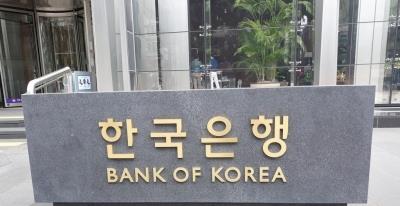
S. Korea Keeps Key Rate Frozen Amid Financial Stability Woes
In a widely expected decision, the Monetary Policy Board of the Bank of Korea (BOK) held its key rate steady at 2.5 percent during its rate-setting meeting in Seoul, reports Yonhap news agency.
The move followed a rate freeze in July, as the BOK opted for a cautious approach, despite the pressing need to support economic growth, to guard against financial stability risks, while navigating uncertainties surrounding the United States' aggressive tariff policy.
"Economic growth, while there is still high uncertainty surrounding the economic growth outlook, has shown modest improvement, mainly driven by domestic demand, although movements in housing prices in Seoul and its surrounding areas and in household debt need to be further monitored," the BOK said in a released statement.
"The Board, therefore, judged that it is appropriate to maintain the current level of the base rate and to assess any changes in domestic and external conditions," it added.
Citing the effects of the government's economic stimulus measures, the BOK revised up its economic growth outlook for the country this year by 0.1 percentage point to 0.9 percent.
BOK Governor Rhee Chang-yong told a press briefing that five out of six board members supported the rate freeze decision, while five of them voiced the need to keep open the possibility of further rate reductions in the next three months.
The central bank began its monetary easing cycle in October and has since cut the key interest rate by a combined 100 basis points, with the most recent reduction delivered in May.
The property market remains unsettled and apartment price growth in parts of Seoul continues to run high despite tighter lending regulations.
According to related data from the Korea Real Estate Board, apartment prices in Seoul climbed 0.14 percent in the first week of this month, accelerating from a 0.12 percent gain the week before. The increase has somewhat slowed to a 0.09 percent gain in the third week of this month.
In a bid to rein in soaring housing prices, authorities in late June imposed a 600 million-won (US$431,769) cap on mortgage loans for property purchases in the capital region and suspended home-backed loans for multi-homeowners.
Tighter debt-service-ratio (DSR) regulations have also been applied to nearly all types of household debt since July.
Following the series of measures, household loans extended by major South Korean banks grew at a slower pace in July compared to the previous month, but officials have warned the pace could pick up again amid a rise in home transactions.
"I don't think we can control housing prices solely through interest rates. Our goal is to avoid fueling expectations of home price increases by preventing excessive liquidity supply," Rhee said. "Real estate prices have a significant impact on overall inflation in South Korea, as over 50 percent of the total population lives in the Seoul metropolitan area."
The government is expected to announce additional real estate measures, and the BOK will coordinate its policies accordingly, he added.
The on-hold decision also came amid concerns over the widening interest rate gap with the U.S.
The gap has stood at a record high of 2 percentage points since the latest rate reduction by the BOK in May, and a wider gap may increase the risk of a weakening Korean won and potential capital outflows by foreign investors.
Also supporting the BOK's rate freeze decision were signs of recovery in private consumption, partly driven by the government's implementation of a supplementary budget, as well as the conclusion of a tariff deal with the U.S., which somewhat eased uncertainties.
"While it may be inappropriate for the central bank to comment on diplomatic matters, I believe the recent South Korea-U.S. summit was positive and went smoothly. Fortunately, the outcome was largely in line with what we saw before, so there was no need to significantly revise the outlook we had been preparing," Rhee said.
For next year, the BOK maintained its growth forecast at 1.6 percent.
Based on the current estimate, the central bank is projected to maintain the current monetary easing cycle through the first half of next year, according to the governor.

Legal Disclaimer:
MENAFN provides the
information “as is” without warranty of any kind. We do not accept
any responsibility or liability for the accuracy, content, images,
videos, licenses, completeness, legality, or reliability of the information
contained in this article. If you have any complaints or copyright
issues related to this article, kindly contact the provider above.
Most popular stories
Market Research

- Over US$13 Billion Have Trusted Pendle, Becoming One Of The Largest Defi Protocols On Crypto
- Fitell Corporation Launches Solana (SOL) Digital Asset Treasury With $100M Financing Facility, With Focus On Yield And On-Chain Defi Innovation
- LYS Labs Moves Beyond Data And Aims To Become The Operating System For Automated Global Finance
- Dupoin Reports Global Growth, Regulatory Coverage, And User Experience Insights
- Ethereum Based Meme Coin Pepeto Presale Past $6.7 Million As Exchange Demo Launches
- Solstice Announces Strategic Collaboration With Chainlink And Leading Custody And Venture Firms To Enhance Ecosystem Ahead Of USX Stablecoin Launch



















Comments
No comment